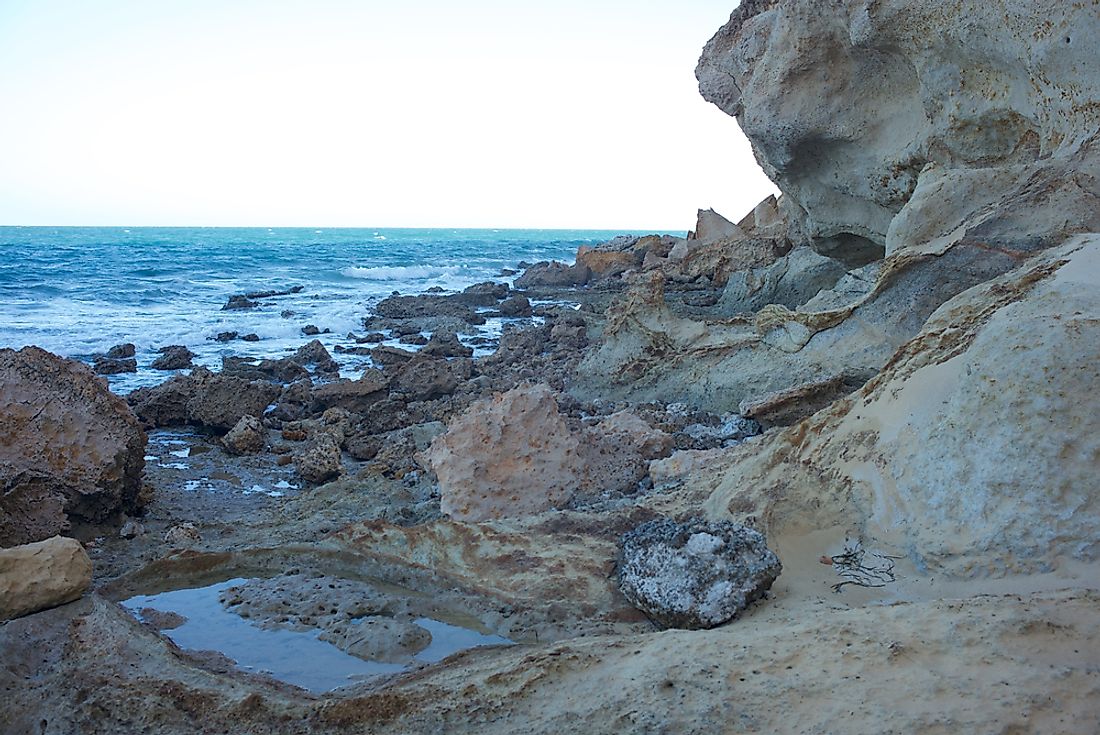Banc d'Arguin National Park - Unique Places Around the World

Banc d’Arguin is Mauritania’s largest and most important national park. The park has a unique ecosystem which provides an important home for a number of species. Besides being a home to wildlife, the park supports the Imraguen tribe who depend on the parks ecosystem for survival. Its strategic location in the coast of West Africa has made the park an important area both traditionally and in modern times.
5. Description
Banc d’Arguin National Park is located in the Bay of Arguin in the west coast of Mauritania. The park was created by a government decree in 1976 but was established as a national park in 1978. The main aim of creating the park was to serve as a natural reserve to protect marine resources, and a breeding ground for different bird species. The park occupies an area of 4,600 square miles and there are many sand dunes, coastal swamps, mudflats and shallow coastal waters. UNESCO in 1989 designated the park as a natural World Heritage Site.
4. Historical Role
The residents around the park have historically depended on fishing as their primary source of livelihood as well as a trading center between the local community and the western world. Goods traded in the area included gum, slaves, and gold. The island of Arguin was an important fishery in a strategic location which made it an important and highly contested for the area by European powers. The Portuguese, French, German, English and Holland colonial powers fought for control of the island which the local Maures traders took advantage to get gifts from the Europeans every year.
3. Modern Significance
Banc d’Arguin is an important natural conservation area because of the unique ecosystem in the park. Its establishment was essential in bringing attention to the threats faced by the park due to overexploitation of the park’s natural resources. The park is one of the most important fisheries in West Africa and a major destination for migratory birds of Europe and West Africa. The local Imraguen tribesmen depend on the park fisheries for their livelihood. The Imraguen use traditional methods in fishing. The Mauritanian government in 2006 sold the fishing rights within the park to the European Union to reduce Mauritania’s debts.
2. Habitat and Biodiversity
The national park is one of the famous coastal parks in West Africa with marine and terrestrial habitats. The habitats are a unique blend of the desert terrestrial lands and the marine zone creating one of the beautiful and contrasting seas and landscape. The park supports a rich biodiversity of flora and fauna including a variety of endangered species. The park supports more than 108 bird species from the Afrotropical and Palaearctic zones. Migratory and wintering birds are common within the park. Bird species within the park include black tern, flamingo, knot, redshank, the European spoonbill, the reed cormorant, ringed plover and the endemic heron and western reef heron. Marine mammals in the park include the endangered Mediterranean monk seal, Atlantic humpback dolphin, and the bottleneck dolphin, killer whales, North Atlantic right whale, and harbor porpoises. Though few, plant species such as balsam, high grass, dwarf acacia, tamarisk bushes, spiny shrubs, spurge, and swallowwort are found within the park especially in the central regions.
1. Environmental Threats and Territorial Disputes
Significant steps have been made in the conservation of the biodiversity and integrity of the Banc d’Arguin national park since its establishment. However, several threats, mostly human-created still affect the park. These threats include pollution and overfishing in the bordering waters which put fish species and fish-eating birds at risk. The park management faces pressure from outside fishers and fishing companies who want to extend their fishing exploits within the park. The intense pressure calls for the management and other international bodies to enforce conservation principles to uphold the integrity of the park and serve the purpose of its establishment.











